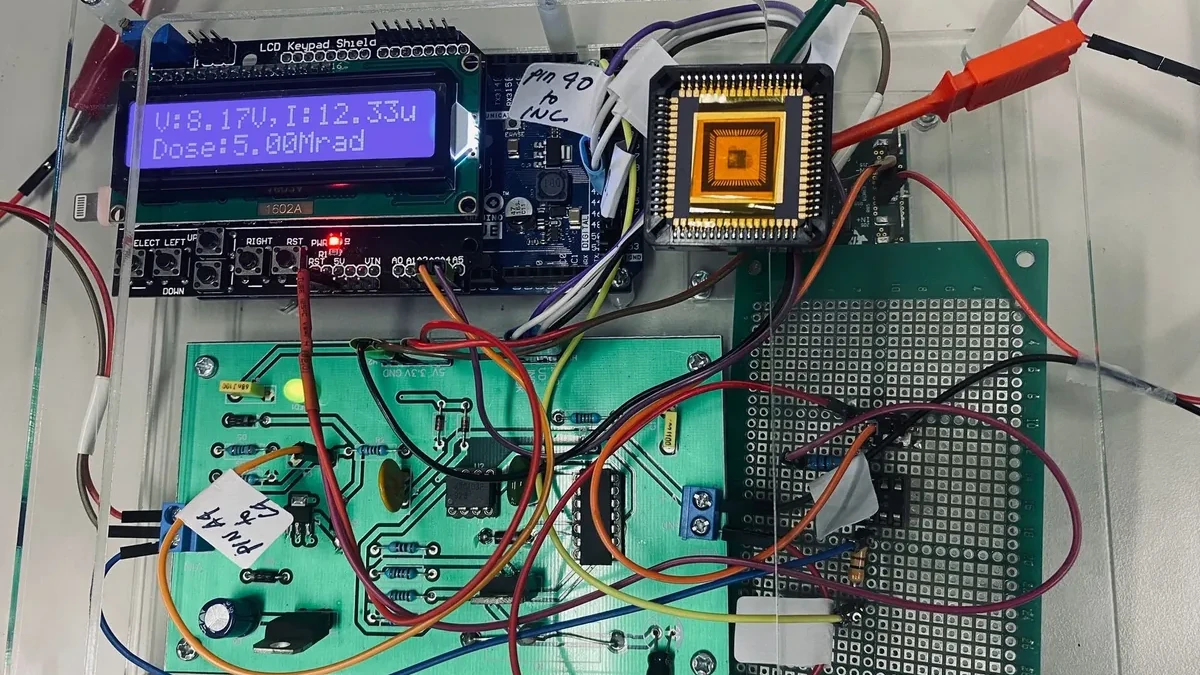Space is a challenging environment for semiconductors, but researchers have shown that a specific type of memristor (the hafnium oxide memristor, to be exact) actually reacts quite usefully when exposed to gamma radiation. In fact, it’s even able to leverage this behavior as a way to measure radiation exposure. In essence, it’s able to act as both memory and a sensor.
Being able to resist radiation exposure is highly desirable for space applications. Efficient ways to measure radiation exposure are just as valuable. The hafnium oxide memristor looks like it might be able to do both, but before going into how that works, let’s take a moment for a memristor refresher.
A memristor is essentially two conductive plates between which bridges can be made by applying a voltage to “write” to the device, by which one sets it to a particular resistance. A positive voltage causes bridging to occur between the two ends, lowering the device’s resistance, and a negative voltage reverses the process, increasing the resistance. The exact formulation of a memristor can vary. The memristor was conceived in the 1970s by Leon Chua, and HP Labs created a working one in 2008. An (expensive) 16-pin DIP was first made available in 2015.
A hafnium oxide memristor is a bit different. Normally it would be write-once, meaning a negative voltage does not reset the device, but researchers discovered that exposing it to gamma radiation appears to weaken the bridging, allowing a negative voltage to reset the device as expected. Exposure to radiation also caused a higher voltage to be required to set the memristor; a behavior researchers were able to leverage into using the memristor to measure radiation exposure. Given time, a hafnium oxide memristor exposed to radiation, causing it to require higher-than-normal voltages to be “set”, eventually lost this attribute. After 30 days, the exposed memristors appeared to recover completely from the effects of radiation exposure and no longer required an elevated voltage for writing. This is the behavior the article refers to as “self-healing”.
The research paper has all the details, and it’s interesting to see new things relating to memristors. After all, when it comes to electronic components it’s been quite a long time since we’ve seen something genuinely new.
